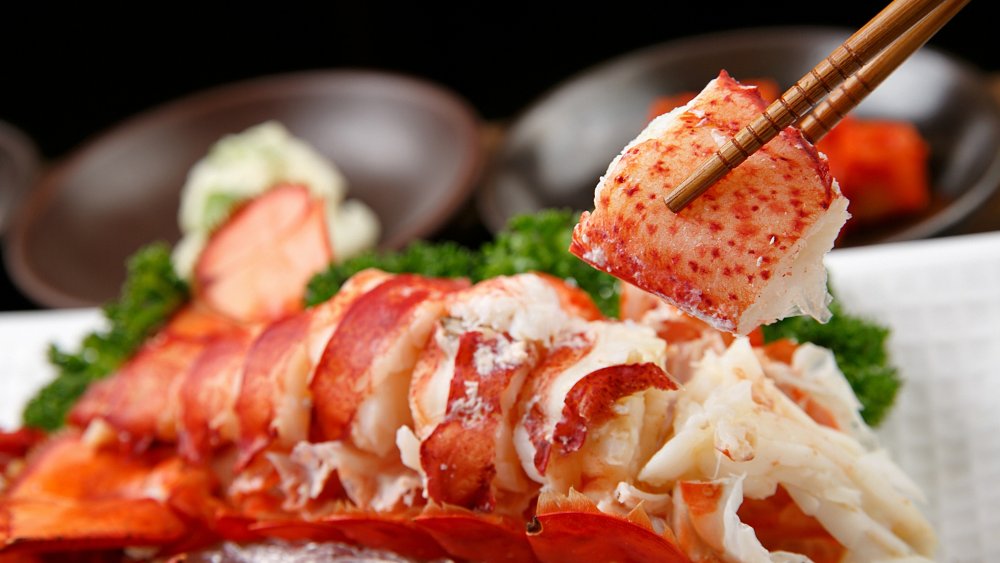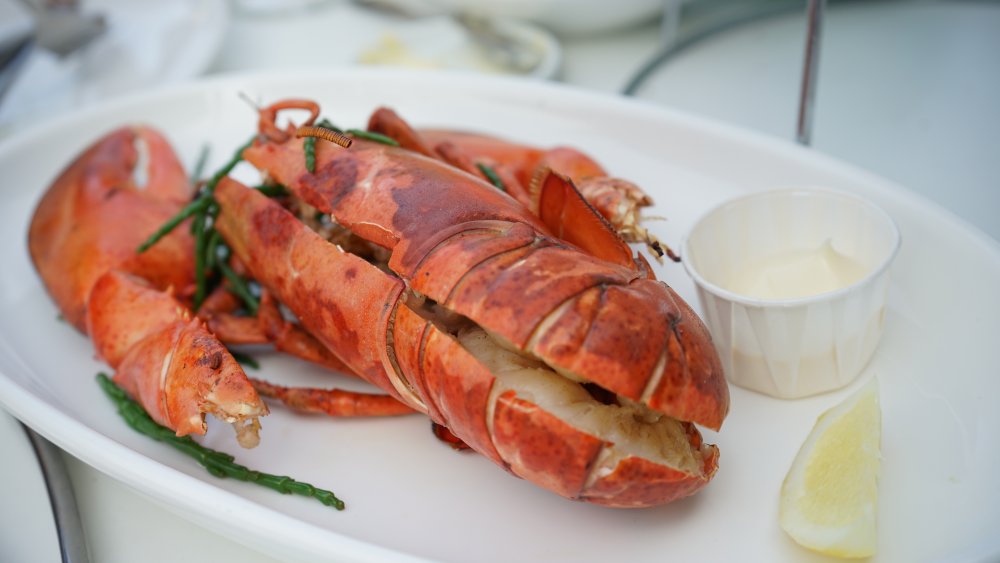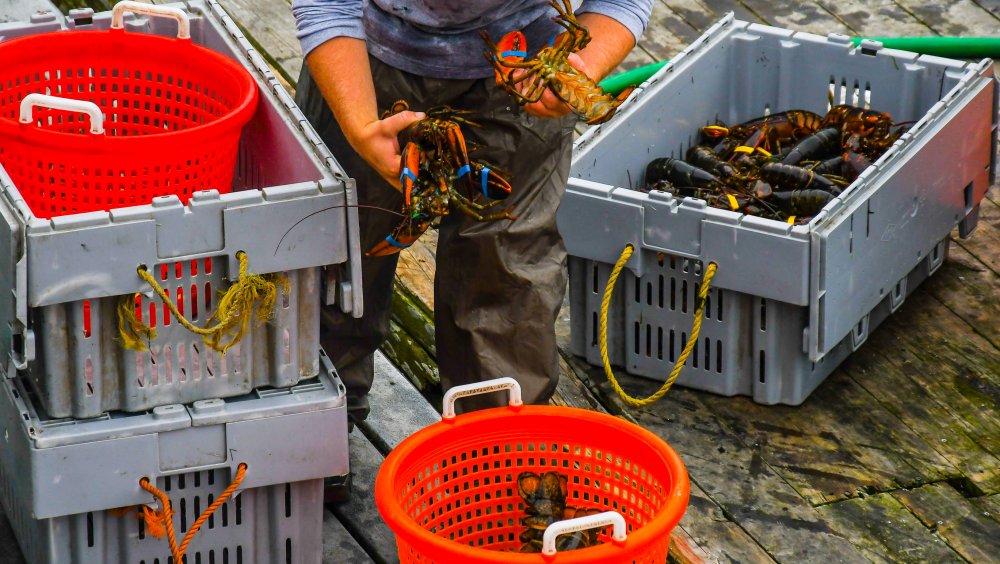Why The Coronavirus Is Making Fresh Lobster So Cheap
Once upon a time, the lobster was so common it was considered the "cockroach of the sea," and it was most commonly fed to prisoners, apprentices, and slaves (via Business Insider). But just as Cinderella went from scullery maid to princess bride, so too did the lobster rise in the seafood rankings to become a delicacy prized all over the world. In 2016 alone, ITE Food & Drink says China imported a total of frozen and fresh lobster products worth more than half a billion dollars. China's appetite for lobster is so immense, it looks to fishermen across several markets, in the U.S., Canada, and New Zealand in order to satisfy its craving.
For the last few years, lobsters have been making the journey from sea to table on chartered flights, particularly around the Lunar New Year when demand reaches a seasonal high (via USA Today). The journey isn't cheap, but they are seen as a necessity so suppliers can meet the appetites of Chinese diners looking to feast on succulent seafood delivered as fresh as possible. The South China Morning Post says that between January to March of 2019, or around the Lunar New Year period, China imported 12,600 tons of lobster while the U.S., which also imports lobster, brought in 87,000 tons.
But thanks to the COVID-19 coronavirus outbreak, which began in China, lobsters ended up staying where they were, and foodies looking to enjoy the crustacean can expect to score a fresh lobster for less than they normally would.
Coronavirus has killed China's appetite for lobsters
The sharp decline in Chinese demand has led to oversupply in markets whose producers had been sending their lobsters abroad. Marianne LaCroix, who is the Executive Director of the Maine Lobster Marketing Collaboration, tells NBC, "When there is a slowdown both in dining out and in shipping in markets outside the U.S., that could cause disruptions in the supply chain."
The discounts vary. In Northern California, you might expect to spend about $20 per pound — that's half of the $40 you would normally pay for a lobster in that part of the country. These prices for the normally-expensive crustacean are at the lowest levels producers have seen in four years. American diners should be celebrating, because as seafood distributor Casey Peterson says (via USA Today), "We were able to offer a product that we normally weren't able to because it was too expensive. The prices went down a lot, so we're able to offer it at a much cheaper price."
While Maine lobster growers saw their prices decline, the drop hasn't been quite as dramatic. NBC says the average price for a "Maine half" (1.5 pounds) is at about $14.50, which is average or slightly lower, and the price of lobster at this time of year is usually high because it isn't yet peak season.
New Zealand's lobsters, which also got stuck in coronavirus limbo, met a slightly different fate. The South China Morning Post says authorities had to help exporters release some of the crustaceans back in the water.
Coronavirus is hurting the bottom line of lobster producers
Even if they will likely find a ready market for lobsters at home, producers aren't happy with the drastic drop in demand because domestic prices have also dropped as a result. One Maine producer says she saw orders go from 1,000 boxes a week to 120 boxes — and this happened when news of the coronavirus hit the headlines since late January. "This is like a fatal blow," Maine lobster grower Stephanie Nadeau tells Bloomberg (via Eat This). "I'm about to lay off most of my employees."
But the ripple effect triggered by COVID-19 is hurting Canadian lobster exporters more than it is hurting those in the U.S. When China began taxing lobsters in 2018, Canada stepped in to fill the void, and until coronavirus, it was sending about nine charter flights full of lobster to China — or about 1.5 million pounds of shellfish a week (via The Detroit News). But the coronavirus has put a stop to Canadian lobster exports, and the Canadians have, in turn, begun selling their lobsters in the U.S.
"Typically seven to 10 cargo flights would be transporting fresh seafood products into the Asian market on a weekly basis," spokesperson Tiffany Chase of Canada's Halifax Stanfield International Airport tells The Star. "About a month ago, one of our cargo carriers advised they'd be temporarily suspending their shipments that go directly into China, as a result of the impact of coronavirus, and they would have had two to three of those weekly flights."


